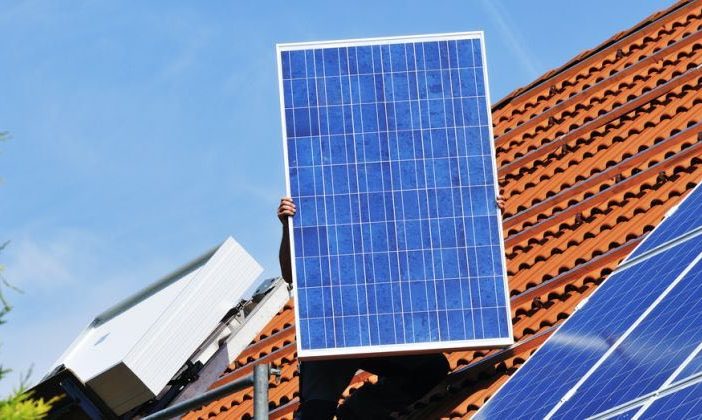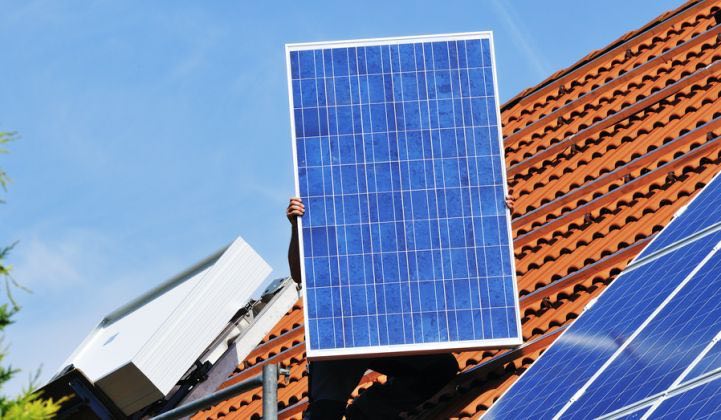
More than a year after it was commissioned by federal energy minister Angus Taylor, the results of the Clean Energy Regulator’s review into the integrity of Australia’s rooftop solar sector have been delivered.
Taylor’s call for the review, and the strict six to eight-week timeframe he set for its delivery, triggered fears in the industry of a Tony Abbott-style renewable energy witch hunt. And the timing didn’t help, with “dodgy solar” and “cowboy installers” a hot topic in the Murdoch press; a fact that the CER itself had felt the need to call out.
This would be a review, as the CER has put it, into the rooftop solar sector to address consumer issues, defective installations, misuse of installer accreditation details, and safety and quality concerns.
And now here it is – all 63 pages and 13 recommendations.You can read about the ins and outs of these recommendations here, on One Step Off The Grid sister site, RenewEconomy.
But what does the report say about the state of Australia’s rooftop solar industry? Where is it going wrong? How much crap solar is it producing? And how does the CER suggest doing it better? Here’s what the report had to say in its own (sometimes lightly paraphrased) words…
Australia’s rooftop solar industry is mostly doing the right thing, but it’s important not to let a few bad apples spoil the bunch
“All stakeholders agreed that most installers and retailers are doing the right thing, but it is important to enhance protections or consumers and the SRES against those who are not,” the report said.
“The ACCC and ACL regulators found that, ‘while high volumes of complaints are received [regarding rooftop solar PV sales and installations], the complaints are generally individual issues relating to small, localised traders. The complaints are often involving single, rogue employees and there is little evidence of systemic company non-compliance by national traders’.”
That said, there are some key areas for concern at the moment, that need to be tightened up
“These range from lack of transparency of BNPL [buy now, pay later] finance interest rates and other costs, through to systems not working at all or failing to meet promised generation,” the report says.
In terms of the Small-scale Renewable Energy Scheme, the CER was particularly concerned about the incidence of CEC accredited installers signing the written statement when they had not installed or supervised the installation of the system as required in the CEC guidelines. That included installers who were overseas at the time of the installation, and installations undertaken without the involvement of a licensed electrician.
“The Regulator has evidence of a material number of CEC accredited installers (6% responsible for 37% of installations) signing written statements of STC eligibility when they were likely not onsite during many installations, which is contrary to the CEC’s current guidelines.”
The federal government and the CER want to use “technology” to help put a stop to this, although exactly what that would be is unclear.
Retailers got a special shout out for poor performance and not enough accountability
“There was general agreement that some retailers are causing integrity issues in the SRES and retailers should be accountable in the regulatory framework if selling systems based on the STCs,” the report said.
“Rooftop solar PV retailers sell the system to the consumer and either undertake or contract out the installation. Information provided by the ACCC during engagement for this review, supported by many other stakeholders engaged with and the Regulator’s own investigations, highlights that poor performing retailers are typically the cause of both issues for consumers and integrity issues in the SRES.”
The CER noted that most stakeholders consulted in the review highlighted the issue of some retailers selling systems and contracting installations based on prices that are too low, resulting in cutting corners.
“Solar retailers are often the first point of contact, and main source of information, for consumers. Ensuring they are acting with integrity is vital in safeguarding consumer protections and rights,” the report says.
“With reports of dishonest and deceitful sales practices, and the number of complaints against solar retailers increasing substantially in recent years there is an opportunity to implement stronger controls over retailers participating the SRES.”
The CER has some ideas to fix this, though
“It is recommended that the system retailer be required by law to make a written statement when they provide the registered agent with the accredited installer’s written statement and the STC assignment form signed by the system owner.
“This new statement would include that the system will perform to the quote provided to the consumer (bar extenuating circumstances outside the retailer’s control), and that the system is complete, connected and generating.
“It is further proposed that the Regulator would have the power to refuse to accept a statement from a retailer with an unacceptable history of making false statements, or a retailer making a false statement that has caused serious harm to consumers and/or the scheme and failed to offer rectification.
“The ACCC agrees that the proposed new written statement by retailers, coupled with the listing of ineligible retailers, would set a very strong deterrent to unscrupulous operators.
“The proposed retailer written statement will make it easier for the Regulator, ACCC and ACL regulators to work together to stop the harm caused by retailers who breach SRES eligibility requirements and consumer laws. Hence, this should benefit consumers.”
And what about those dodgy retailers who slip off and form another company?
“The Regulator would publish a list of ineligible retailers. If directors or owners of ineligible retailers attempt
to phoenix, the Regulator would have the power to add the new entity to the ineligible list. Retailers
would have the normal procedural fairness and review rights under Commonwealth law.”
And how does Australia fare in terms of installations? Are our rooftop solar systems safe?
Going from the data of a 2020 report, the CER notes that the rate of unsafe solar electrical work was similar to
other electrical work with the exception of rooftop DC isolators, which is a unique requirement to rooftop solar PV installations in Australia. And that bit needs further consideration – but it’s mainly in the purview of the states and territories.
Beyond that, the CER can do what it can to tighten up its monitoring and policing of accredited installers.
“The rooftop solar PV sector review provides opportunities to improve the integrity of existing controls in the SRES and clarify roles and responsibilities across jurisdictions, while delivering benefits to consumers.”
The main concern is to ensure that qualified electricians are doing the work
The report says: “The Regulator, and some state and territory electrical safety regulators, have evidence of installations being carried out without an electrician being onsite. This is contrary to state and territory electrical safety laws which require certain electrical work to be performed by licenced electricians.
“This practice is unacceptable and could lead to unsafe systems as well as workplace health and safety (WH&S) risks. While states and territories are responsible for enforcing their electrical safety laws (and workplace health and safety legislation), requiring the accredited installer (who must be a licensed electrician) to prove they have been onsite in order to make the STC eligibility statement will give consumers comfort that a licenced electrician (specifically trained in solar PV installation) has been onsite during the installation and that may also reduce WH&S risks.
“In addition, it is proposed that the written statement provided by the accredited installer be simplified with clear statements that the installer was onsite, the system was installed in accordance with state and territory electrical safety laws and any additional SRES eligibility criteria have been met.”
It’s also important to cross-check that equipment used meets the necessary standards or quality and safety – and that people get what they pay for
The report also looks into the integrity and accuracy of serial number data supplied by a manufacturer to the voluntary solar panel validation (SPV) system, and questions over whether some panels meet current eligibility
requirements.
The report recommends requirements of the manufacturer to provide a positive statement to the Regulator stating components used in rooftop solar installations meet its standards, and will work as quoted.
“In addition, requiring serial numbers of components as an eligibility criterion for STCs will help support consumer confidence in the SRES,” the report says.
The final word from the CER?
“The Australian rooftop solar PV sector is strong with most participants doing the right thing to comply with installation requirements, quality assurance and safety. The reforms will help safeguard those businesses currently providing quality services and products by focusing on removing unscrupulous operators from the market.”

Sophie is editor of One Step Off The Grid and deputy editor of its sister site, Renew Economy. Sophie has been writing about clean energy for more than a decade.



